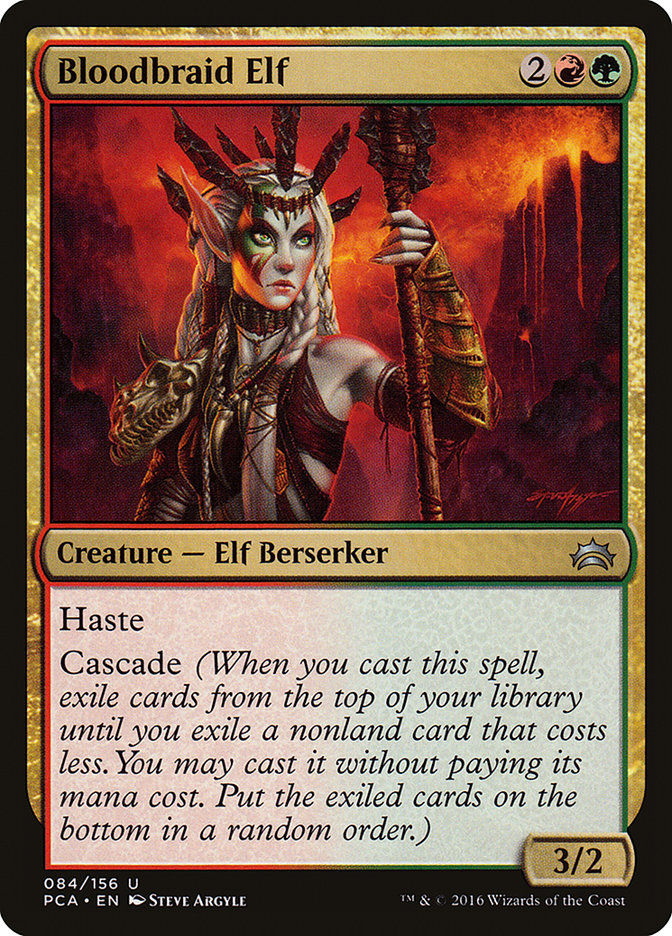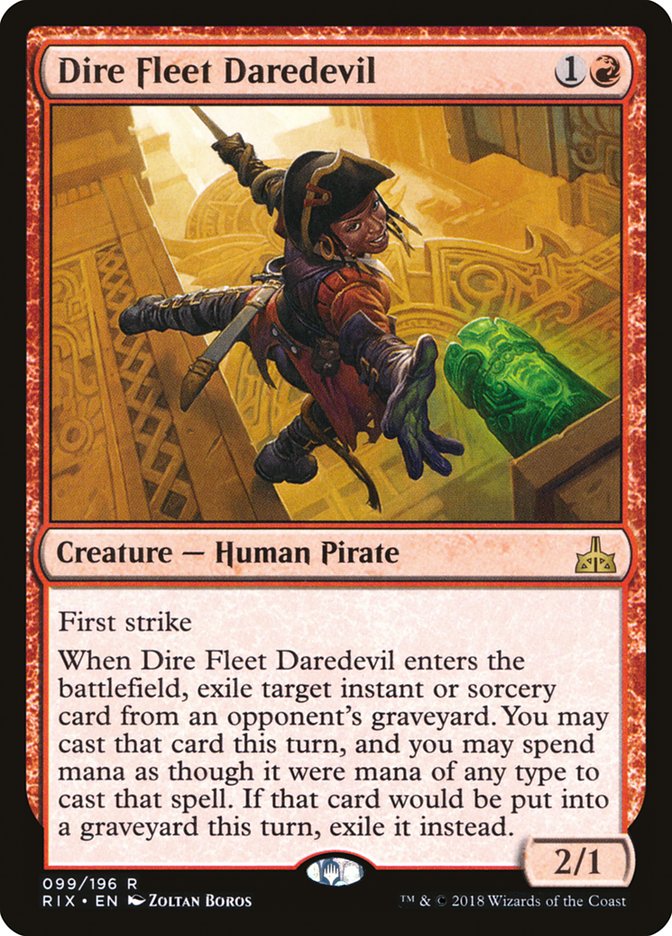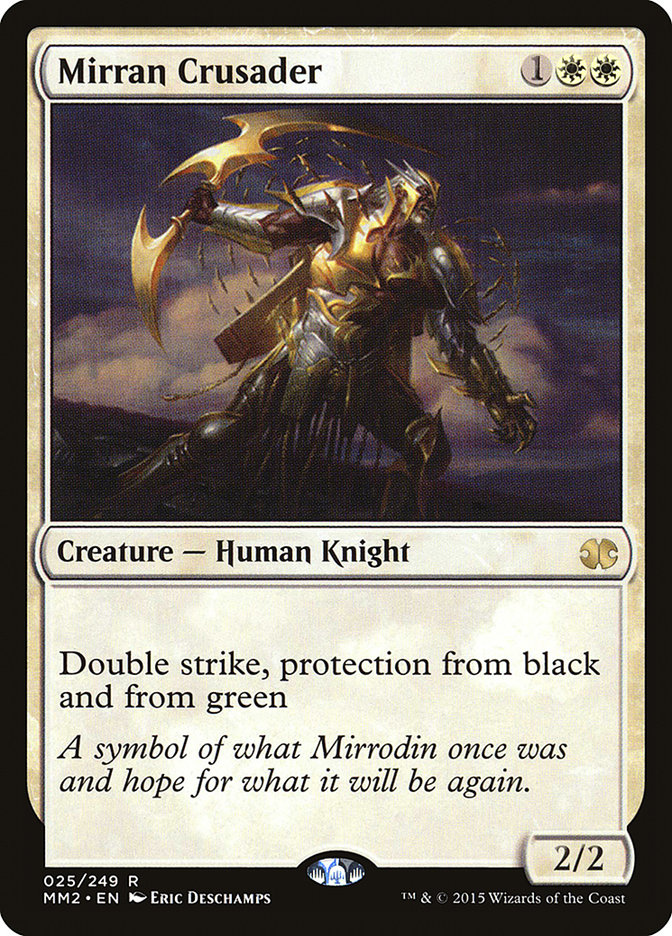Hello everyone! My name is Steve Locke and I’m going to be interrupting
your regularly scheduled programming today to share my thought processes
that lead to me winning Grand Prix Phoenix this past weekend with
Five-Color Humans.
I will do my best to make it worth your while. I promise! But first, a
brief introduction…
I first started playing magic during Mercadian Masques and started
my first regular venturing into competitive Magic tournaments during the
original Ravnica block. I have played my fair share of Constructed
archetypes over the years, but several of my best performances have come
from creature-based decks that primarily look to apply pressure backed up
by disruption while maintaining high adaptability to different roles and
game state textures. Decks such as Rebels, Faeries, Tribal Zoo, Five-Color
Rally the Ancestors, Zombies, and now Five-Color Humans, are the types of
decks that are by far my favorite to play.
Five-Color Humans caught my eye right away when it burst onto the scene
with the release of Ixalan and the arrival of Kitesail Freebooter
and Unclaimed Territory, adding another disruptive two-drop and unlocking
the powerful five-color manabase, respectively. The initial versions were
very powerful and the evolutions of the archetype to include Phantasmal
Image led it to be the most popular choice for Pro Tour Rivals of
Ixalan, even landing two copies in the top 8.
So what has changed since then?
The strengths and restrictions of these powerful new cards to the format
have been well documented by other writers, so instead I will fast forward
to the results of the Magic Online World Championship. Jund was highly
represented, G/W Hexproof won the tournament, and zero copies of the Humans
deck were registered. This narrow metagame snapshot paints a hostile
picture for Humans. But, as Modern tends to do, in a matter of weeks, the
format rebalanced and we saw the likes of G/R Ponza, Storm, Infect, U/W
Control, Colorless Eldrazi, Tron, etc. find success at the first Modern
Open since the unbannings.
As for Humans, the wider the format gets, the better. The deck thrives in a
wide open Modern format because it is presents a fast clock with the tools
to disrupt many of its faster opponents. In fact, I believe Humans to be
among the five best decks in Modern in a vacuum. Despite that, I don’t
think it was getting the attention it deserves from the rest of the player
base, and I saw several Modern strategy articles that didn’t even include
Humans in their rundown of matchups, which means that cards were not being
chosen for their applications against Humans specifically. Further, that
meant there were going to be several people playing flexible spot removal
spells like Abrupt Decay and Collective Brutality instead of the more
powerful Anger of the Gods and Grim Lavamancers.
Without further ado, here is the list I ran to a first place finish at
Grand Prix Phoenix:
Creatures (37)
- 4 Meddling Mage
- 1 Dark Confidant
- 4 Noble Hierarch
- 1 Mirran Crusader
- 3 Phantasmal Image
- 4 Champion of the Parish
- 3 Thalia, Guardian of Thraben
- 4 Mantis Rider
- 4 Reflector Mage
- 4 Thalia's Lieutenant
- 4 Kitesail Freebooter
- 1 Dire Fleet Daredevil
Lands (19)
Spells (4)

In preparing for the tournament, I was actually having a lot of success
with the stock list of Humans that included the fourth Phantasmal Image,
fourth Thalia, Guardian of Thraben, and the first Kessig Malcontents.
However, I did expect a lot of Jund and felt there were a few issues that
needed addressing in that matchup.
Thalia, Guardian of Thraben is a good threat in the matchup, but sometimes,
while it hinders my opponents ability to develop Planeswalkers or disrupt
my battlefield, oftentimes they are left needing to use their disruption on
other creatures like Meddling Mage and Kitesail Freebooter or they just
stall the ground with Tarmogoyf and/or Scavenging Ooze, and Thalia ends up
not dying. One of the biggest ways to lose to Jund is to draw too many dead
cards in the matchup, and too often the second Thalia can get stuck in your
hand as a dead draw with the way the matchup plays out. I replaced this
fourth copy with a single copy of Dark Confidant, as it’s still a potent
two-drop in the matchup and can still be deployed if you have Thalia on the
battlefield.
Similarly, you can get stranded with Phantasmal Images in hand without any
good targets on the battlefield versus their removal heavy draws and
needing to apply pressure, so I also replaced one with a single copy of
Dire Fleet Daredevil, a potent card versus decks with cheap interaction.
And lastly, while I think Kessig Malcontents is one of the best main deck
cards in the deck, you have to sideboard it out more often than not, so I
decided to play a main deck Mirran Crusader instead. Although it’s not
nearly as good as the last threat you play, it’s still a potent threat in
the mid stages of the game and it’s much better as your primary threat and
a pretty great companion to a turn 1 Noble Hierarch, which can sometimes
win a game versus Jund or Death’s Shadow variants by itself due to its
protection.
I have always found sideboard guides to be helpful baselines on how to
approach specific matchups so I have provided my general thoughts on why I
included certain cards and what cards I generally bring in and out in
certain matchups below, for the most played archetypes from Grand Prix
Phoenix.
VS Burn
Out:

In:

You’re a slight favorite in this matchup as a lot of your draws line up
well vs. theirs, as your creatures can get large quickly and race and
disrupt their burn spells. The games they win generally involve them
getting damage in with their creatures as they remove your first couple
creatures and finishing you off with burn spells or games that revolve
around Grim Lavamancer.
Sin Collector and Dire Fleet Daredevil are nice ways to gain ground in the
matchup without having to play specific hate cards. Dire Fleet Daredevil
can often kill Grim Lavamancer at the cost of throwing away a creature,
which is often worth it, or steal a backbreaking Lightning Helix and Sin
Collector can help then run out of gas ahead of schedule.
VS Jund
Out:

In:

You’re definitely the aggressor in this matchup and are looking to maximize
the traction you are gaining on the battlefield each turn. However,
sequencing is generally going to be more important than pure speed, and
it’s important to think about the way your cards will trade and line up
with the order they will be able to deploy their own spells.
After sideboard, the goal is to minimize the amount of cards in your deck
that would be a bad top deck, because while you’re still the aggressor in
the matchup, you’ll need to be able to sustain that aggression over several
turns, and one of the common ways for Jund to take over the game is for the
Humans deck to take their foot off the gas by drawing an irrelevant card in
the mid game (think Aether Vial or too many irrelevant 2/2s). Thalia’s
Lieutenant is also a liability if you leave too many in, as they can target
your other creatures with their discard spells and leave you with an
unimpressive two mana Champion of the Parish. However, it’s still one of
your better aggressive cards so I still like to leave in a couple to grow
your creatures.
I have also positioned several of my sideboard cards in this matchup to be
able to potentially remove or ignore Tarmogoyf or Scavenging Ooze as you
can still attack into a Dark Confidant or Bloodbraid Elf with your smaller
creatures.
Sideboard plans for other black midrange decks would be similar. And if
Anger of the Gods becomes more mainstream, I would look to bring in some
number of Sin Collector in this matchup and/or switch the second Xathrid
Necromancer out for a Selfless Spirit.
VS Tron
Out:

In:

Unfortunately, this matchup can be quite tough if your opponent is good at
assembling turn 3 Tron. There aren’t that many cards available to sideboard
for this deck that changes that, as a single Kitesail Freebooter or
Meddling Mage effect just won’t be able to disrupt their big mana threats
from taking over the game, so I decided just not to play any cards
specifically for this matchup.
The best thing you can do is mulligan into your most aggressive hands,
which means looking for a one-drop along with your beefier cards in
Champion of the Parish, Thalia’s Lieutenant, and Mantis Rider. I bring in
Xathrid Necromancer as sometimes you can provide enough pressure to get
under an Oblivion Stone and it’s more relevant than the cards I take out.
VS B/R Hollow One
Out:

In:

This matchup is generally favorable as their general gameplay is to play to
the battlefield with big and wide creatures and you can generally just do
that better than they can, and they aren’t too disruptive to your game
plan.
After sideboard they bring in a little more disruption and potentially
Blood Moon, so there’s a little tension with Aether Vial as you would like
to trim some of them but need to respect their ability to potentially Blood
Moon you. You also have Thalia and Kitesail Freebooter to fight Blood Moon
if need be. I like to side out my Meddling Mages entirely as they can
Faithless Looting away any cards that get locked away and it generally
isn’t all that effective in the matchup.
VS Five-Color Humans
Out:

In:

The mirror can be weird because the hate bears are actually the worst cards
in the matchup. Thalia and Kitesail Freebooter are mostly textless, and
Meddling Mage can be awkward with your own cards and their Aether Vials.
The best cards in the matchup are the ones that are able to affect the
number of large creatures on the battlefield. I side out Meddling Mages and
Thalias for a bunch of fair cards and removal. Izzet Staticaster is one of
the better cards in the mirror, as it can control Phantasmal Images and
unprotected one toughness creatures like a late Champion of the Parish or
Thalia’s Lieutenant. Kitesail Freebooter having flying is surprisingly
relevant despite its small size, so it gets the nod over the other
two-drops. Dire Fleet Daredevil also gets the nod over Thalia, as it’s just
better since it isn’t legendary, but sometimes it can steal a Dismember or
Gut Shot.
Of note, this is one of the matchups that you would have still been happy
to have Kessig Malcontents after sideboard.
VS Affinity
Out:

In:

This is a tough but winnable matchup. Similar to Tron, you need to find
your most aggressive hands and try to race them, but you’re at the mercy to
Steel Overseer as it can often get out of hand too quickly and their
battlefield will be too hard to overcome.
However, unlike Tron, you actually have some options to improve after
sideboard. I opted for the more hateful Kataki over the more broad answer
of Vithian Renegades this tournament because I specifically wanted to have
the most powerful card versus Affinity and Lantern. It would be nice to
have access to Gut Shot instead of Dismember here as they generally kill
the same creatures, but Dismember costs an additional mana and two more
life; I believe you need the slots to also be useful against Jund and other
green midrange decks right now.
VS U/R Gifts Storm
Out:

In:

Humans is a natural predator to Storm, and I’m always happy to be paired
against it, but the matches can play out pretty tight and I usually lose a
game in the process. Sin Collector is useful as additional spell-based
disruption and Izzet Staticaster helps control their potential to Empty the
Warrens. I haven’t had as much success recently sideboarding in
Grafdigger’s Cage as several Storm players are bringing in Pyromancer
Ascension or will just go for Empty the Warrens instead of Past in Flames
if that’s the case, so I have been leaving that in the sideboard.
VS U/W Control
Out:

In:

Their deck is kind of slow and full of four-drops so your disruptive
two-drops are quite good against them, and the games you win usually
involve continually applying pressure to the battlefield while using your
disruptive elements to keep them off a wrath effect. Generally I will look
to hold Mantis Rider in case they’re able to get their wrath through.
Getting Reflector Mage out of your deck is priority number one after
sideboard and you get to bring in four additional cards that make it hard
for them to sweep the battlefield, something they usually need to be able
to do to win the matchup.
Grixis and Jeskai are less reliant on wrath effects and are generally
better against Humans because of it, but Humans will sideboard in a similar
way versus them.
VS Eldrazi
Out:

In:

Similar to the B/R Hollow One matchup, the Eldrazi decks don’t play a lot
of disruption and are generally trying to beat you with big creatures,
something which you’ll be able to do better than them on average. I like to
bring in Xathrid Necromancer as well as some additional removal to play
around All is Dust and because it makes it hard for them to close the game
since they don’t play evasive threats and you can continually block until
you draw into more action. You can also get away with sideboarding out a
Seachrome Coast since they won’t be attacking your Noble Hierarchs, making
them reliable mana sources.
VS Other
There are several other decks you could face throughout a Modern
tournament, and it is hard to cover them all so I hope that the above
examples will lay the framework for similar matchups or thought processes
behind when I like to bring in/out each card.
A quick round by round tournament recap is provided below for those
interested in what matchups I faced and how they played out. Luckily I
didn’t get paired against Tron, Affinity, or Hexproof, which are some of
the decks tougher matchups, but I did face and defeat Jund three times and
felt good about the tweaks I made to list to help better address that
matchup.
Round 1: Bye
Round 2: Bye
Round 3: Win (2-0 VS Burn)
Round 4: Win (2-1 VS B/R Hollow One)
Round 5: Win (2-1 VS B/R Hollow One)
Round 6: Win (2-0 VS Eldrazi Tron)
Round 7: Win (2-0 VS Ironworks Combo)
Round 8: Loss (0-2 VS B/R Hollow One)
Round 9: Win (2-0 VS Burn)
Round 10: Win (2-1 VS U/R Gifts Storm)
Round 11: Win (2-0 VS Jund)
Round 12: Win (2-1 VS U/W Control)
Round 13: Win (2-0 VS Five-Color Humans)
Round 14: Win (2-1 VS Jund)
Round 15: Intentional Draw
Quarterfinals: Win (2-0 VS R/G Eldrazi)
Semifinals: Win (2-1 VS Bant Company)
Finals: Win (2-1 VS Jund)
Thanks for tuning in, and hopefully this helps you prepare for your next
Modern tournament from either side of the matchups!
And now back to your regularly scheduled program…






